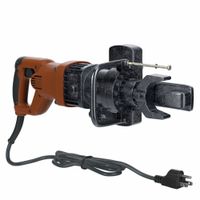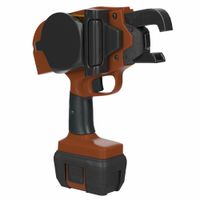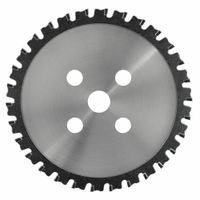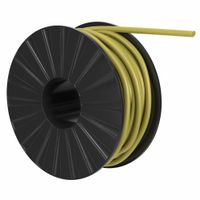Call +(254) 703 030 000 / 751 483 999 / 721 704 777
- Home
- Tools
- Power Tools
- Rebar Tying Tools Cutters Benders
.....Read More
Frequently Asked Questions
What is the best rebar tying tool for construction projects?
The best rebar tying tool for construction projects is often considered to be the MAX USA Corp. RB441T TwinTier Rebar Tying Tool. This tool is highly regarded for its efficiency, durability, and ease of use, making it a favorite among construction professionals.
The MAX RB441T features a twin wire feeding mechanism that significantly reduces the time required to tie rebar, enhancing productivity on the job site. It can tie up to 4,000 ties per charge, thanks to its lithium-ion battery, which ensures long-lasting performance without frequent recharging. The tool is capable of tying rebar from #3 x #3 to #7 x #7, accommodating a wide range of construction needs.
One of the standout features of the RB441T is its ergonomic design, which reduces user fatigue during prolonged use. The tool is lightweight and well-balanced, allowing for comfortable handling and operation. Additionally, it has a brushless twisting motor that extends the tool's lifespan and reduces maintenance requirements.
The MAX RB441T also offers adjustable tie strength, allowing users to customize the tightness of the ties according to specific project requirements. This flexibility ensures that the tool can be used for various applications, from residential to commercial construction projects.
Overall, the MAX USA Corp. RB441T TwinTier Rebar Tying Tool is considered the best option due to its combination of speed, efficiency, and user-friendly features, making it an invaluable asset for construction professionals seeking to optimize their rebar tying processes.
How do you use a rebar cutter safely and effectively?
To use a rebar cutter safely and effectively, follow these steps:
1. **Read the Manual**: Familiarize yourself with the manufacturer's instructions and safety guidelines specific to your rebar cutter model.
2. **Wear Protective Gear**: Equip yourself with safety goggles, gloves, steel-toed boots, and a hard hat to protect against flying debris and accidental injuries.
3. **Inspect the Equipment**: Before use, check the rebar cutter for any damage or wear, ensuring all parts are functioning correctly. Verify that the blades are sharp and properly aligned.
4. **Secure the Rebar**: Position the rebar securely on a stable surface. Use clamps if necessary to prevent movement during cutting.
5. **Position the Cutter**: Align the cutter blades with the marked cutting point on the rebar. Ensure the cutter is perpendicular to the rebar for a clean cut.
6. **Use Proper Technique**: For manual cutters, apply steady pressure without forcing the tool. For hydraulic or electric cutters, ensure the power source is stable and follow the operational procedure.
7. **Maintain a Safe Distance**: Keep hands and other body parts away from the cutting area. Ensure bystanders are at a safe distance.
8. **Monitor the Environment**: Be aware of your surroundings, ensuring the work area is clear of obstacles and tripping hazards.
9. **Perform Regular Maintenance**: After use, clean the cutter and check for any signs of wear. Lubricate moving parts as recommended by the manufacturer.
10. **Store Properly**: Store the rebar cutter in a dry, secure location to prevent damage and unauthorized use.
By adhering to these guidelines, you can ensure the safe and effective use of a rebar cutter.
What are the different types of rebar benders available?
There are several types of rebar benders available, each designed to meet specific needs in construction and fabrication:
1. **Manual Rebar Benders**: These are simple, hand-operated tools used for bending rebar on-site. They are portable and cost-effective, suitable for small-scale projects or when electricity is not available.
2. **Electric Rebar Benders**: Powered by electricity, these machines offer more power and precision than manual benders. They are ideal for medium to large-scale projects, providing consistent bends with less physical effort.
3. **Hydraulic Rebar Benders**: Utilizing hydraulic power, these benders are capable of bending larger diameters of rebar with ease. They are highly efficient and suitable for heavy-duty applications, offering high precision and speed.
4. **Portable Rebar Benders**: These are lightweight and designed for easy transport, making them suitable for on-site work where mobility is crucial. They can be manual, electric, or battery-operated.
5. **Battery-Powered Rebar Benders**: These offer the convenience of portability without the need for a power outlet. They are ideal for remote locations and provide a balance between power and mobility.
6. **Rebar Bender and Cutter Combination**: These machines combine the functions of bending and cutting rebar, providing a versatile solution for construction sites. They save time and space by eliminating the need for separate tools.
7. **CNC Rebar Benders**: Computer Numerical Control (CNC) benders offer automated, high-precision bending for complex shapes and large-scale production. They are used in factories and large construction projects where accuracy and efficiency are paramount.
8. **Tabletop Rebar Benders**: These are compact, stationary machines suitable for workshops or factories. They provide stability and precision for repetitive bending tasks.
Each type of rebar bender has its own advantages and is chosen based on the specific requirements of the project, such as the scale, complexity, and location of the work.
How do you choose the right size rebar for a project?
To choose the right size rebar for a project, consider the following factors:
1. **Structural Requirements**: Determine the load-bearing requirements of the structure. Larger loads typically require larger diameter rebar to provide adequate support and prevent structural failure.
2. **Building Codes and Standards**: Refer to local building codes and standards, such as the American Concrete Institute (ACI) guidelines, which specify minimum rebar sizes for different types of structures and applications.
3. **Concrete Element Dimensions**: The size of the concrete element (e.g., slab, beam, column) influences rebar size. Larger elements may require larger rebar to ensure proper reinforcement and spacing.
4. **Spacing and Cover**: Ensure that the rebar size allows for adequate spacing between bars and sufficient concrete cover to protect against corrosion and fire. This is crucial for maintaining the integrity and durability of the structure.
5. **Load Distribution**: Analyze the load distribution within the structure. Areas with concentrated loads or stress points may require larger or additional rebar to distribute the forces effectively.
6. **Construction Feasibility**: Consider the ease of handling and placing rebar during construction. Extremely large rebar can be difficult to work with and may require specialized equipment or techniques.
7. **Cost Considerations**: Balance the cost of larger rebar against the benefits. While larger rebar may provide greater strength, it can also increase material costs and labor.
8. **Engineering Judgment**: Consult with a structural engineer to assess the specific needs of the project. Their expertise can guide the selection of appropriate rebar sizes based on detailed calculations and simulations.
By evaluating these factors, you can select the appropriate rebar size to ensure structural integrity, compliance with regulations, and cost-effectiveness.
What is the difference between manual and automatic rebar tying tools?
Manual rebar tying tools and automatic rebar tying tools differ primarily in their operation, efficiency, and user effort.
Manual rebar tying tools require the user to physically manipulate the tool to twist and secure the rebar ties. These tools are typically simple, hand-operated devices like pliers or wire twisters. The user must manually wrap the wire around the rebar intersection and twist it to secure the bars together. This process is labor-intensive, time-consuming, and can lead to fatigue, especially on large projects. Manual tools are generally more affordable and require minimal maintenance, making them suitable for smaller projects or where budget constraints are significant.
Automatic rebar tying tools, on the other hand, are powered devices that automate the tying process. These tools use a battery or electric power to wrap and twist the wire around the rebar intersection quickly and consistently. The user simply positions the tool over the rebar, and with the press of a button, the tool completes the tie in seconds. Automatic tools significantly reduce the physical effort required, increase productivity, and ensure uniform tie quality. They are ideal for large-scale construction projects where speed and efficiency are critical. However, automatic tools are more expensive, require regular maintenance, and depend on battery life or power availability.
In summary, manual rebar tying tools are cost-effective and simple but labor-intensive, while automatic rebar tying tools offer speed and efficiency at a higher cost and with maintenance considerations.
How do you maintain and care for rebar tools?
To maintain and care for rebar tools effectively, follow these steps:
1. **Cleaning**: After each use, clean the tools to remove concrete, rust, and debris. Use a wire brush or a cloth with mild detergent and water. For stubborn residues, a solvent or a specialized cleaner may be necessary.
2. **Inspection**: Regularly inspect tools for wear and damage. Check for cracks, bends, or any signs of deterioration. Pay special attention to cutting edges and moving parts.
3. **Lubrication**: Apply lubricant to moving parts such as hinges, joints, and cutting edges to ensure smooth operation and prevent rust. Use a light machine oil or a specialized tool lubricant.
4. **Sharpening**: Keep cutting tools like rebar cutters and benders sharp. Use a file or a sharpening stone to maintain the edge, ensuring efficient and safe operation.
5. **Rust Prevention**: Store tools in a dry place to prevent rust. Use silica gel packs or rust inhibitors in storage areas. For long-term storage, consider applying a light coat of oil to metal surfaces.
6. **Storage**: Store tools properly when not in use. Use toolboxes or racks to keep them organized and protected from damage. Ensure that tools are not exposed to moisture or extreme temperatures.
7. **Calibration**: For tools that require precision, such as rebar benders, regularly check and calibrate them to ensure accuracy.
8. **Replacement**: Replace worn-out or damaged parts promptly. Using tools with compromised integrity can lead to accidents and inefficiency.
9. **Training**: Ensure that all users are trained in the proper use and maintenance of rebar tools to extend their lifespan and ensure safety.
By following these steps, you can ensure that your rebar tools remain in good condition, providing reliable performance and safety on the job site.
What safety precautions should be taken when using rebar tools?
When using rebar tools, several safety precautions are essential to prevent accidents and ensure a safe working environment:
1. **Personal Protective Equipment (PPE):** Always wear appropriate PPE, including safety goggles, gloves, hard hats, steel-toed boots, and high-visibility clothing to protect against flying debris, sharp edges, and heavy materials.
2. **Tool Inspection:** Before use, inspect all rebar tools for damage or wear. Ensure that cutting edges are sharp and free from defects, and that handles and grips are secure.
3. **Proper Training:** Ensure that all workers are adequately trained in the use of rebar tools. They should understand the correct operation, potential hazards, and emergency procedures.
4. **Secure Work Area:** Keep the work area clean and organized. Remove any unnecessary materials or debris that could cause tripping or interfere with tool operation.
5. **Correct Tool Usage:** Use the right tool for the job. Avoid using tools for purposes they are not designed for, as this can lead to tool failure or injury.
6. **Safe Handling:** When cutting or bending rebar, ensure that the material is securely clamped or held in place to prevent movement. Use both hands to operate tools when necessary.
7. **Awareness of Surroundings:** Be aware of other workers and activities in the vicinity. Maintain a safe distance from others when operating tools to prevent accidental contact.
8. **Maintenance:** Regularly maintain and service tools according to the manufacturer’s instructions to ensure they remain in safe working condition.
9. **Emergency Preparedness:** Have a first aid kit readily available and ensure that workers know how to respond to injuries or emergencies.
10. **Ergonomics:** Use tools that are ergonomically designed to reduce strain and fatigue. Take regular breaks to prevent overexertion.
By adhering to these safety precautions, the risk of accidents and injuries when using rebar tools can be significantly minimized.




